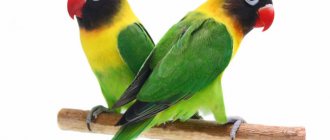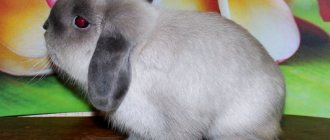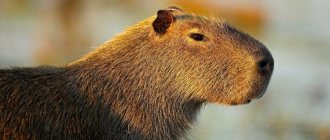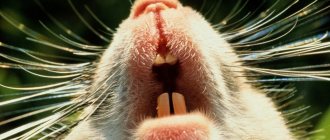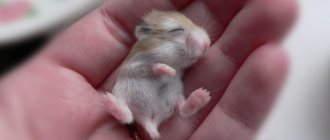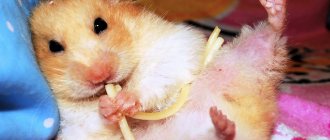Individuals of the hamster order are essentially mobile and active animals, however, it is sometimes found that they accumulate extra pounds. A fat hamster, whose photo is posted on the page, may suffer from impaired functioning of the digestive tract, its metabolism may be disrupted, which, in turn, will lead to the rapid death of the pet. Obesity, which occurs in hamsters, can lead to irreparable health problems, and therefore it is important to know how to deal with it and what preventative measures to take to prevent it.
Appearance of the largest animal
Nowadays, many breeds of hamsters have been developed. They differ from each other in color, fluffiness, and size. Some of them lead an active lifestyle, others are more passive. Therefore, choosing any breed is quite difficult.
The breed of the largest hamster in the world is called Karbysh, or common hamster. Body length is 32-35 cm. There are specimens with completely black fur, and only white spots may be located on the paws. The muzzle of this breed is slightly elongated. The ears are small. The fingers have fairly sharp claws.
Representatives of the Syrian breed are considered large, their size reaches 35 cm. Unlike capybaras, they get along well with people. These pets have a beautiful color; few animals have this color in nature. It is golden, reddish and peachy. Syrian hamsters are considered the most beautiful.
Through selection, animals of almost any color, as well as multicolored ones, were obtained. They are most in demand among pets.
Representatives of the Radde breed are considered the fattest of all existing representatives of the genus. Their weight can reach up to 600 g. Height is about 30 cm. Outwardly, they are a little reminiscent of the Syrian species. Not recommended for keeping at home.
The skin is brown in color; darker areas may be present. The cheeks are plump. There are light spots on the paws and sides. Vision is weak, but it is compensated by a good sense of smell and hearing.
The biggest hamster
The largest hamster in the world reaches 35 centimeters in length and a body weight of 0.7-1 kg. It is this rodent that is a pest in dacha areas; it is called a wild hamster. People try to fight him, but to no avail. He is resistant to poison and fearless. And even politicians can envy his arrogance. An animal can freely pass by you and go to your garden bed to gather supplies for the winter. If only he were alone, but there are many of them and they all fill their own pantries. The largest hamster digs a hole up to 8 meters long. There he stores food for the winter in specially designed compartments. No frost can reach it, taking advantage of this, in winter the rodent goes into hibernation. But the wild hamster looks like a small mouse compared to the capybara named Caplin Rous. This animal only looks like a hamster. Its height is 0.6 meters and its length is 1.4 m. The weight of an adult is 34-66 kg. This huge animal lives in South and Central America.
Deception or truth
Among all this diversity, the capybara stands out, which many classify as hamsters. It is mistakenly considered the largest representative of this species. But it belongs to the capybara genus. The animal only vaguely resembles a hamster, which causes errors. Capybaras are quite trainable. They are often kept at home by residents of South America. A very large hamster is an animal from the category of myths.
Capybara with a cat
Brief description of breeds
Golden homa
It is also often called Syriac. Currently, this breed holds the palm in popularity. Rodents are quite large (half the size of a mouse), but not so large that they can be entrusted to a small child.
The color of the fur matches the name of the breed: medium-length fur is usually reddish, golden or tan. There are black, white, spotted and even apricot colors.
Fiery beauties prefer privacy to the noisy company of relatives, but at the same time they are always happy to communicate with family members, quickly get used to their hands and love affection.
Angora breed
It is not difficult to guess that this breed of hamster belongs to the long-haired category. His middle name is real. Even in photos the animals look great, but in real life they act like a king.
This species is descended from Syrian hamsters and gets its name from its lush coat, similar to Angora cats. These rodents have nothing to do with angora.
Unlike their golden ancestors, they are distinguished by a wide variety of colors: white, cream, silver, tricolor. Surprisingly, men have much longer hair than women.
Dzungarian breed
Dwarves among their fellow tribesmen. The coat is painted in a smoky gray color with a clearly defined dark stripe along the back and a characteristic diamond on the forehead. The ears are black, the paws are white. Average length 10 cm.
Unlike previous species, hamsters are independent; they do not particularly like human attention. They are distinguished by their eccentric character: they often fight in groups. Therefore, it is best to keep them alone or popular in a group of their age from birth. They are mainly nocturnal.
Campbell
Another one of these little ones. They are often confused with Dzungarians, although the differences are visible at first glance:
- firstly, the color of this breed of hamster is yellow-brown;
- secondly, the stripe on the back and the diamond on the forehead are not clearly drawn.
They also prefer solitude, so this species is more interested in observing their lives and habits than in communicating.
Sungur breed
Distinctive features are large bulging eyes, a bulbous nose, an arched croup and hairy paws, for which the hamster received the nickname “fur paws.”
But the breed is unique not only for its unusual structure, but also for its ability to change color depending on the season: the less hot and sunny it is, the lighter the coat becomes.
Roborovsky breed
Quite a rare breed, although many would like to have these incredibly active, lively and cheerful children. At one time, it practically disappeared from the face of the earth, but American scientists managed to restore and even increase the population.
The true representatives of the species are truly tiny creatures and are considered the smallest, not counting Taylor's dwarf, among all species of domestic hamsters. It is best to keep rodents in pairs or even small family groups.
The coloring is typical for deserts and semi-deserts: white belly, pink back, black ears with a white border.
Taylor's dwarf
This is actually a wild breed, but adapts well to life in captivity. They enjoy communicating with people and feel quite comfortable in a cage - they prefer a well-fed and calm life.
The size is small - only 5cm.
By the way, such sizes require special painstaking selection of the cage, but it is better to keep babies in glass or plastic containers, which will be difficult for them to chew.
Ordinary
At most, it is not even Gulliver among the entire family of hamsters: the average height is 25 cm. Despite the ordinary and ordinary name, the hamster is distinguished by its bright and contrasting color:
- red back;
- black belly;
- on the face and sides there are two light dots separated by a black stripe.
Pets come across a calmer coat - black or black and white.
Yin Yang
It is difficult to say that black and white animals are a separate breed of hamsters.
For example, albinos can be found among the Youngs, Syrians and Campbells. In nature, white rodents are easy prey for predators, so there are few of them in their natural habitat. The snow-white color is highly valued among breeders.
Black hamsters are as rare as white ones. Charcoal hamsters are usually born in litters of the Syrian or Dzungarian race.
Siberian animal
Another breed of fur paws. Externally, Siberians are very similar to Djungarians and also change their dark color to lighter in winter. Rodents are very small and active, so keep them in a glass terrarium. As a last resort, a cage will do, but with a very small intersection gap.
Features of behavior
The habits of the largest hamsters have their own characteristics. Such rodents are difficult to tame. The remaining, smaller specimens can live next to humans, creating almost no problems.
If there is a choice, it is best to choose males for home keeping: they are less aggressive than females. If there are several animals, then they should be kept separately. In nature, individuals do not live in pairs or flocks. Together, the female and male unite only for the duration of mating. After this period ends, conflicts often arise between them, which can result in injuries on both sides.
The optimal cage size for a hamster is 40x60 cm, and the wheel should be 16 cm in diameter. In this case, the pet will sit comfortably in the cage. The animal must have a house in which it will stay during the day.
Consequences
Many people believe that fat pets cause affection because of their clubfoot, however, it is worth knowing that obesity in individuals of the hamster order can have serious consequences. These include:
- heart failure;
- thrombus formation;
- disruption of the functioning of the digestive system;
- other diseases.
The lifespan of hamsters is already not very long, and if extra pounds are added to the baby’s other problems, it begins to shrink altogether. Even if it does not cause life-threatening diseases, the pet’s well-being will be extremely disappointing.
Large specimens for home keeping
Djungarian and Syrian hamsters are most suitable for living at home. They, like other breeds of this species, are clean. They wait out the entire daylight period in the hole and only come out at nightfall. Large hamsters of the Karbysh and Radde breeds remain wild, meaning they can bite. And given that this animal’s teeth are quite sharp, the consequences for the owner can be disastrous.
The Karbysh breed, settling next to humans, creates many problems. Summer residents really do not like these animals, despite their cute appearance. Just a couple of individuals can completely deprive the owner of hope for a good harvest. All the grains that are attractive to the animal will migrate from the garden to the personal pantry. The proximity of this species does not cause delight among gardeners, despite the fact that wild hamsters can feed on insects and destroy them in their summer cottage.
Rodents store large reserves of food in their burrows. The problem with keeping large breeds of hamsters is that they create winter reserves weighing from 15 to 20 kg. In an apartment it is quite difficult to provide such an opportunity.
It is necessary to care for large individuals belonging to the Syrian breed, taking into account their characteristics. The cage for them must be chosen in a large size. This also applies to the wheel in which the pet will run. For such animals, it is necessary to purchase a cage with bars, not a plastic one. The distance between the bars should be such that the animal does not stick parts of its body through the bars.
Most hamsters lead an active lifestyle, but only at night. The animal must run up to 12 km per day. It is quite difficult to provide such loads in a cage. That's why the wheel was invented. Special balls are also used. While in them, the animal is able to move around the apartment quite quickly.
In nature, in addition to grains, hamsters can eat worms and snakes. We are talking about wild breeds. In urban conditions, it is quite difficult to provide such a diet. Store-bought hamster food does not meet these needs. Domesticated breeds do well on plant-based foods.
These can be beets, lettuce, tomatoes, pumpkin, zucchini, cucumbers, carrots, dandelion grass. Caring for a hamster, which is a wild species, is quite complicated.
Wild (common) hamster
Representatives of this breed are distinguished by their large size compared to other breeds. One tail of an ordinary hamster reaches about 8 centimeters, and its height is about 30 cm. Such hamsters require special maintenance; the home must be spacious to be able to install a labyrinth or several rooms with storage rooms.
They are very rarely kept at home due to the difficulty of providing the necessary housing. These animals are very thrifty; in the wild, their reserves can exceed 15 kg.
Habitat
In nature, the largest hamster in the world lives in steppe and forest-steppe zones, which are located in the south of Europe; animals also live in the west of Siberia, in the northern part of Kazakhstan. It is not uncommon for individuals to choose much more northern territories as their habitat. The animal's favorite habitat is the outskirts of fields and vegetable gardens. It often happens that common hamsters are found in Moscow near the Moscow River and forested areas. It is not yet possible to determine the exact number of rodents within the city.
In the Moscow region, individuals of this species have not survived. The main reason for this is:
- construction of buildings near rodent habitats;
- overgrowing of meadows;
- destruction of burrows of representatives of this species by people.
It is worth noting that many individuals change their color depending on their habitat. In the northern zones the color is darker, closer to the south it becomes lighter. Body sizes also change, they increase from west to east and from north to south.
Homeland of the Djungarians
Zoologist P. Pallas was the first to discover and describe the Djungarian hamster. This happened in 1773, when the scientist made an expedition through the territory corresponding to modern East Kazakhstan. At that time, the region was part of Dzungaria, or the Oirat Khanate.
The specific name of the animal has survived to this day. It reflects the historical name of the area where the hamster was encountered. The territory of Dzungaria in the modern sense is an area in northwestern China. Djungarians have never lived here. Their real homeland is the steppes in eastern Kazakhstan.
Sounds that the Djungarian hamster makes:
Breeds of wild hamsters
- Karbysh
An adult hamster reaches a length of up to 35 cm and a weight of up to 1 kg. A very harmful hamster, he likes to live near people and is a frequent visitor to gardens. This hamster is protected in many countries: Poland, Germany, Ukraine, Belarus, France, Belgium.
Wild hamster - carbysh
- Gray hamster
Listed in the Red Book. An adult grows up to 13 cm in length. Habitat: steppes, semi-deserts.
Gray, wild hamster
- Hamster Radde
This species is widespread in the North Caucasus, Georgia, and the Stavropol Territory. It causes great harm to agriculture and is also a carrier of the dangerous infection tularemia. Dimensions up to 28 cm.
Hamster Radde
- Eversman's hamster
A small hamster, slightly larger than a rat, up to 16 cm. Lives in Kazakhstan, the Volga region, and Trans-Urals. In captivity it is well tamed. In some regions of Russia, such a hamster is listed in the Red Book.
Photo of Eversman's hamster
- Mongolian hamster
A small hamster, slightly larger than a mouse, up to 15 cm. Belongs to the Eversmann hamster species. This hamster has a light brown color. It lives in China and Mongolia.
Mongolian hamster
- Barabinsky hamster
This individual belongs to the gray species of hamsters. It got its name in honor of the Barabinsk steppe of the same name. Usually such hamsters are small in size, up to 13 cm.
Barabinsky hamster
- Daurian hamster
This hamster is the size of a mouse. Lives in Mongolia and Siberia. In size, up to 13 cm.
Daurian hamster
- Brandt's hamster
Transcaucasian hamster. The length of the individual is up to 18 cm. It lives in Turkey, Lebanon, Israel and the Eastern Ciscaucasia.
Brandt's hamster
- Hamster Sokolov
Named in honor of zoologist V.E. Sokolova. Body length up to 114 cm. Lives in Mongolia and China.
Hamster Sokolov
- Chinese hamster
They are classified as dwarf hamsters, up to 12 cm. Such hamsters have a characteristic elongated body and longer legs. Found in China and Mongolia.
Chinese hamster
- Newton's hamster
Lives in northern Bulgaria and Romania. Body length up to 17 cm. Life expectancy about 2 years.
Photo of Newton's hamster
- Taylor's Hamster
Belongs to dwarf hamsters, up to 8 cm. Habitat: North America. Minks are built in the grass.
Taylor's Hamster
- grasshopper hamster
Body length up to 13 cm. Habitat: Canada, North America. An interesting feature is that from time to time they can sit down and emit a short high-pitched squeak for 1-2 seconds.
grasshopper hamster
- Siberian hamster
Refers to dwarf hamsters. Habitat: Eastern Siberia.
Siberian hamster
- Tibetan hamster
The body length is up to 11 cm. The color of the fur coat is dark gray. Habitat: Western China.
Tibetan hamster
- rat hamster
The body length of such a hamster reaches up to 25 cm. It lives in Northeast China, the Korean Peninsula, Primorsky Krai, and the Jewish Autonomous Region. The color is predominantly gray-brown.
rat hamster
- Short-tailed hamster
Lives in the mountainous regions of Tibet, South Asia, China. Body length up to 10 cm.
Short-tailed hamster
- Canese hamster
This hamster measures up to 10 cm in size and weighs up to 100 grams. Habitat: China.
Canese hamster
- Long-tailed hamster
Lives in the southwest of Transbaikalia. Length – up to 12 cm. Burrows are built among the rocks.
Long-tailed hamster
As you can see, there are simply a huge number of hamsters living on Earth. We hope that after reading this text you have become a little more familiar with these interesting animals.
Great article 12
Lifestyle and habits
The largest hamster in the world is distinguished not only by its size, but also by its temperament. This is the only representative of the hamster family, which, if threatened, attacks not only representatives of its own species, but also larger animals. There are often cases when hamsters even attack people. At the same time, the rodent takes a fighting stance, standing on its hind legs, loudly clicks its teeth in warning and then attacks.
An adult representative of this species feeds:
- grain crops;
- vegetables and fruits;
- greens;
- plant roots;
- insects.
It often happens that smaller rodents also get eaten by animals of this species. The individual carries reserves in capacious cheek pouches, which it empties by applying strong pressure on them with its front paws. Food supplies begin to replenish at the end of summer. In the pantries you can find up to 25 kilograms of grain, each variety of which is stored separately. One day, more than 90 kilograms of supplies were removed from the hole.
The burrows of representatives of this species often reach 2.5 meters in depth. There can be up to 10 exits. All burrows include several storerooms and a nesting chamber. Since this representative of hamsters is a nocturnal animal, it spends most of the day without appearing on the surface. With the exception of the mating season, the animal leads a solitary lifestyle.
The mating season begins in April and continues until August. During this period, females are in burrows and wait for males to come to them. As soon as the male enters the female’s territory, he marks her and, depending on whether the female likes the smell, mating occurs. At the end of the act, everyone returns to their hole. Males visit females every 5-6 days.
The animal can swim well. To do this, the rodent takes air into its cheek pouches and moves in the water with the current. The air in the cheeks prevents the individual from drowning like an inflatable ring. Caution and the ability to fend for themselves allow some special ones to live up to 4 years in the natural environment, despite the fact that the average life expectancy is 3 years.


